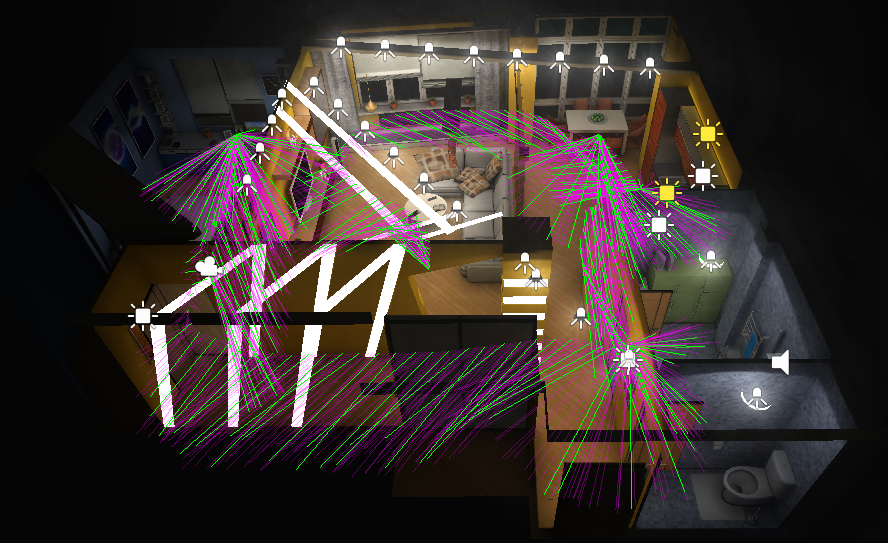Section: New Results
Perception for Plausible Rendering
An Automated High Level Saliency Predictor for Smart Game Balancing
Participant : George Drettakis.
Successfully predicting visual attention can significantly improve many aspects of computer graphics: scene design, interactivity and rendering. Most previous attention models are mainly based on low-level image features, and fail to take into account high level factors such as scene context, topology, or task. Low-level saliency has previously been combined with task maps, but only for predetermined tasks. Thus, the application of these methods to graphics (e.g., for selective rendering) has not achieved its full potential.
In this work, we present the first automated high-level saliency predictor incorporating two hypotheses from perception and cognitive science that can be adapted to different tasks. The first states that a scene is comprised of objects expected to be found in a specific context as well objects out of context which are salient (scene schemata) while the other claims that viewer's attention is captured by isolated objects (singletons). We proposed a new model of attention by extending Eckstein's Differential Weighting Model. We conducted a formal eye-tracking experiment which confirmed that object saliency guides attention to specific objects in a game scene and determined appropriate parameters for a model. We presented a GPU-based system architecture that estimates the probabilities of objects to be attended in real-time (Figure 5 ). We embedded this tool in a game level editor to automatically adjust game level difficulty based on object saliency, offering a novel way to facilitate game design. We perform a study confirming that game level completion time depends on object topology as predicted by our system.
|
This work is a collaboration with George Alex Koulieris and Katerina Mania from the Technical University of Crete and Douglas Cunningham from the Technical University of Cottbus. The work was published in the ACM Transactions on Applied Perception (TAP) Journal [15] and presented as a Talk at SIGGRAPH 2014 in Vancouver.
C-LOD: Context-aware Material Level-of-Detail applied to Mobile Graphics
Participant : George Drettakis.
Attention-based Level-Of-Detail (LOD) managers downgrade the quality of areas that are expected to go unnoticed by an observer to economize on computational resources. The perceptibility of lowered visual fidelity is determined by the accuracy of the attention model that assigns quality levels. Most previous attention based LOD managers do not take into account saliency provoked by context, failing to provide consistently accurate attention predictions.
In this work, we extended a recent high level saliency model with four additional components yielding more accurate predictions: an object-intrinsic factor accounting for canonical form of objects, an object-context factor for contextual isolation of objects, a feature uniqueness term that accounts for the number of salient features in an image, and a temporal context that generates recurring fixations for objects inconsistent with the context. We conducted a perceptual experiment to acquire the weighting factors to initialize our model. We then designed C-LOD, a LOD manager that maintains a constant frame rate on mobile devices by dynamically re-adjusting material quality on secondary visual features of non-attended objects. In a proof of concept study we established that by incorporating C-LOD, complex effects such as parallax occlusion mapping usually omitted in mobile devices can now be employed, without overloading GPU capability and, at the same time, conserving battery power. We validated our work via eye-tracking (Figure 6 )
|
This work is a collaboration with George Alex Koulieris and Katerina Mania from the Technical University of Crete and Douglas Cunningham from the Technical University of Cottbus. The work was published in a special issue of Computer Graphics Forum [16] and was presented at the Eurographics Symposium on Rendering 2014 in Lyon. It was also presented as a poster at SIGGRAPH 2014 in Vancouver winning the 3rd place in the ACM's Graduate Student Research Competition.



